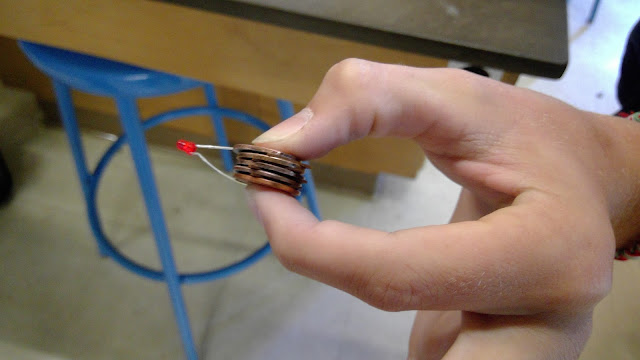Last Friday in Mr. Wong's class we conducted a lab about the effects of sodium hydroxide, a base, and hydroelectric acid on cabbage juice. Cabbage juice is special because when you add to it it changes color and indicate the pH of the new solution.
Table info:
Tube 1 (Just the Cabbage
Juice)
pH of Cabbage Juice: 7.45
Color of juice is purple
Test Tube 2
1 drop more of HCl for -1 pH change
to 6.6
Lighter Purple
Test Tube 3:
5 drops more of HCl for -2 pH
change to 5.5
Darker Pink
Test Tube 4
11 drops more of HCl for -3 pH
change to 4.5
Light Pink
Part C:
7.5 initial pH (Just Cabbage Juice)
Color Purplish Blue
Test Tube 5:
2 drop more of NaOH to raise to 8.6
pH
Teal
Test Tube 6:
7 drops more of NaOH to raise to 9.4
Greenish Teal
Test Tube 7:
7 drops more of NaOH to raise to
10.42 pH
Dark Green
Graphs:
Analysis Questions:
4. I would say for our lab, the drops of base had more of an effect on the pH. This is because less drops of the base had a greater effect on the cabbage juice than the acidic drops did.
5. I learned pH can be swayed depending the pH of other solutions when added to a central solution. Overall the lab was fun and I liked the cool colors the were the result. I had no idea that you could change the color of cabbage juice do significantly so easily! Below is our picture of our juice color spectrum and a picture of our materials used.

















